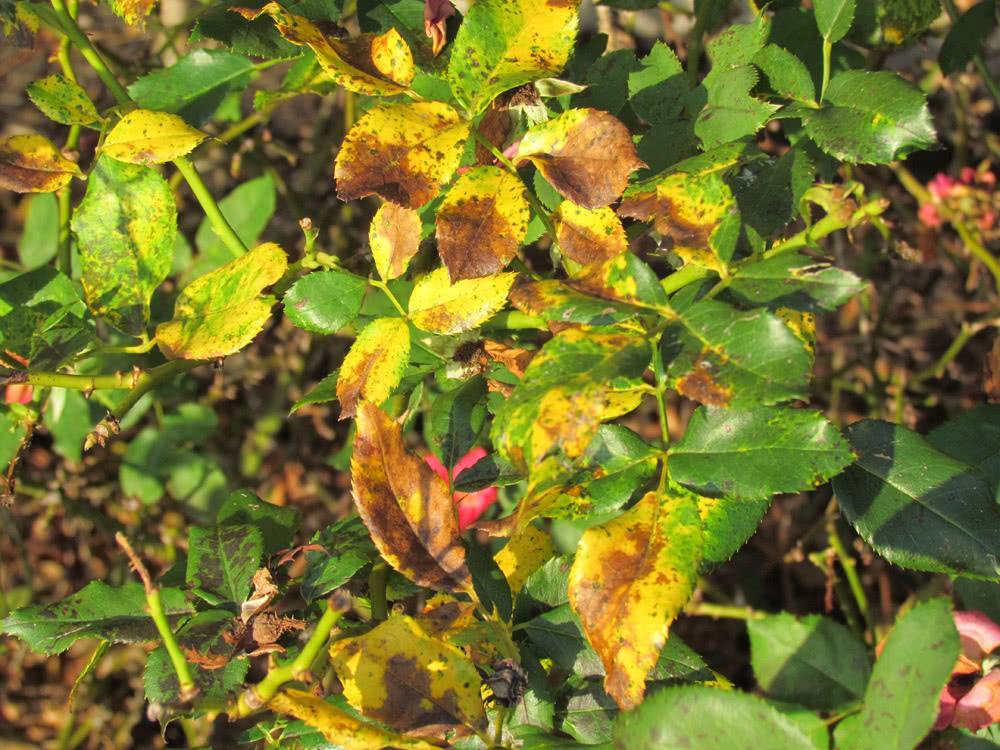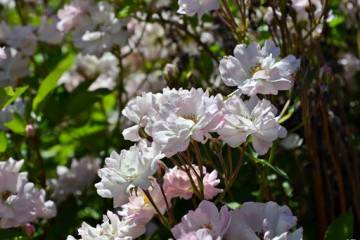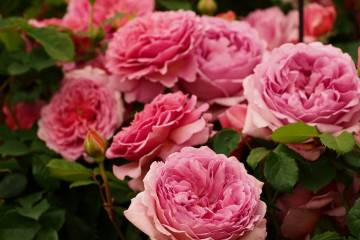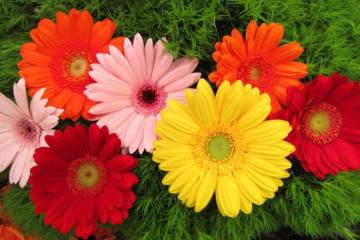Ground cover roses - what are they, varieties
Content:
For decorating parks and gardens, landscape designers often use ground cover roses. They create multi-colored carpets, they are included in plant compositions, and they also frame park paths and hedges. Thanks to the brightness and abundant flowering, the varieties are gaining popularity among amateur flower growers who decorate their summer cottages with ground cover roses.
Groundcover rose: description and characteristics
The name of the variety was obtained due to the ability to line the ground with shoots, almost covering it, like a carpet.
The length of the stems of ground cover roses is varied and ranges from 0.2 to 2 m. The flowers differ in size, shape and degree of doubleness (they are simple, semi-double, and usually densely double).
The features of the variety are:
- densely leafy, flexible shoots that cover the ground;
- bush width exceeding height;
- wide root system that prevents soil destruction.
Use in design
Due to the relative ease of cultivation and care, the ground cover rose is actively used in the design of the park landscape. Flowers cover unsightly areas of land, and also create compositions with other plants.
This type is used to decorate flower beds and borders, a creeping rose is planted to strengthen the soil on the slopes.
The best varieties of ground cover roses for growing outdoors
To decorate summer cottages and gardens, flower growers are looking for varieties of ground cover roses, characterized by ease of growing and care, abundant flowering and rapid growth. However, in order to find suitable varieties, several criteria must be considered.
Blooming all summer
Long-blooming roses include:
- Fair Play with bright pink flowers (poorly adapted to rainy weather);
- Ballerina with abundantly branching bushes and white flowers with a pink border;
- Amber Viel, distinguished by its small size and spherical flowers of a yellow or amber hue;
- Matador with a large number (up to 15 pcs.) Of light pink flowers (does not like the wind);
- Amber Sun, whose shoots are densely branching and tightly covering the soil (yellow flowers).
Winter hardy varieties
Roses that are not afraid of cold weather include:
- Fiona with bright red double flowers, able to withstand frosts down to -28 ° С;
- Halloween with a height of less than 0.6 m, which covers the ground with a carpet of densely doubled dark red inflorescences (will tolerate a decrease in temperature to -30 ° C);
- snow-white variety Snow Ballet, withstanding -40 ° C (does not like rain).
Varieties for the Moscow region
The climatic features of the environs of Moscow are suitable for growing:
- Super Dorothy, Mirato, Knirps (pink flowers);
- Lilac rain;
- Bessie (with orange petals);
- snow-white Blanca Meidiland.
Planting ground cover roses
In order for the flowers to grow comfortably on the site near the house, it is recommended to follow the basic planting rules.
How to choose the right place
For ground cover roses, choose well-lit areas on a hill (you can plant on a hillock and in flower beds). Planting in a lowland with excess moisture leads to root rot.
In order to avoid sunburn, it is necessary to provide shading during the day (can be planted next to conifers). The southeastern part of the site will be ideal for growing cover roses.
When to plant a groundcover rose
The planting period varies by region. In the south and central part of Russia, it is recommended to plant in the fall 1-1.5 months before the onset of cold weather. This time is enough for rooting. In the north, north-west, in Siberia, planting is carried out in late May - early June.
Preparing a place for a bush
A few days before planting, a hole is dug 0.6-0.7 m deep and 0.5 m in diameter. If you plan to plant roses in a row, you can prepare a trench.
Planting procedure step by step
Technology:
- At the seedling, the buds are removed below the grafting and the roots are slightly pruned.
- The root system is dipped in a bucket with clay diluted in water.
- When planting in heavy clay soil, sand is poured into the bottom of the pit with a layer of 10 cm, if the soil is sandy, then the sand is replaced with clay.
- Compost (10-20 l) and a fertile soil layer (which was removed when digging the planting hole) are added to the depression.
- The seedling is placed in a recess and sprinkled with a lower fertile layer of earth left after digging a hole (the soil should be just above the grafting site).
- It is abundantly watered and mulched with peat or humus.
Features of caring for ground cover roses
Compliance with the basic rules of care allows you to get healthy and beautiful flowers.
Watering rules and humidity
Roses prefer moderate watering once a week. To avoid sunburn, the procedure is performed in the morning, directing the stream under the bushes.
Top dressing and soil quality
Loamy soils of weak acidity (pH 5.5-6.5) are suitable for roses. Feeding begins 14 days after the appearance of the first leaves (nitrogen fertilizers and organic matter are used). After a month, the procedure is repeated. In autumn, roses are fed with phosphorus-potassium supplements.
Pruning and replanting
This species does not need regular pruning. Florists recommend slightly pruning the shoots in the first year to make the bushes thicker, and also shorten the shoots to 30 cm every 5 years to rejuvenate the bushes.
In the process of caring for a creeping rose, you should cut off dead and diseased stems with leaves, and also remove dried buds.
The parts of the shoots remaining after pruning are used for cuttings. To do this, choose a trim of a creeping rose with five leaves, the stalk is placed for 1 day in water with potassium permanganate, and then in the soil under a hood. After rooting, it is transplanted into a pot or open ground.
Transplanting flowers is carried out for reproduction purposes, as well as when moving to a new place.
To propagate a creeping rose, in the spring the shoot is bent to the ground and fixed in the place of the deepening with nutritious soil. One of the buds on the cut is placed in this hole for subsequent rooting.In the fall, the rooted seedling is separated from the mother bush and transplanted.
When transplanting an adult flower, the bush is dug out with an earthen lump (the more lump, the better). The process facilitates pre-watering. For convenience, the shoots are tied with a rope. After digging, the bush is placed on a cloth or other material to move to a new location.
Features of wintering a flower
Many varieties of the creeping rose survive the winter without shelter in the south of the country and in central Russia. However, if a thermophilic rose is grown, additional protection is provided. The same goes for flowers in the northern regions.
As a covering material, spruce branches and dry leaves are used that do not lend themselves well to decay (oak, fern, etc.). Before covering, the bushes are spud.
Recently, an air-dry shelter is gaining popularity - the creation of a frame around flowers from metal arcs or boards, on which a special material is pulled (spunbond, geotextile, etc.). They are also simply wrapped in bushes for insulation.
Disease and pest control
Among the diseases that growers face are powdery mildew, black spot and rust. To get rid of them, it is necessary to remove the affected parts of the plant and spray the bushes with fungicides (foundationol, phytosporin, etc.).
Among the pests are spider mites, scale insects and aphids. A good way to save a creeping rose from parasites is to treat it with insecticides (actara, phyto-farm, etc.).
Groundcover roses have become a popular decoration for parks and home gardens. A variety of varieties allows you to realize exquisite design solutions, and the unpretentiousness of the flower allows you to take care of it without much effort.






















